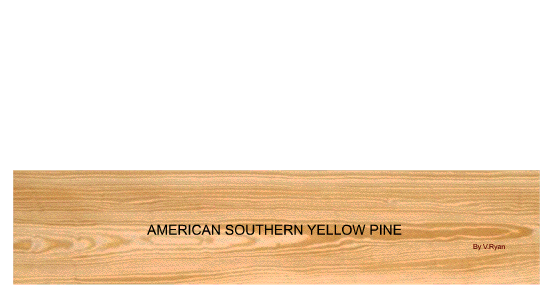| CLICK HERE FOR INDEX PAGE | |
| AMERICAN SOUTHERN YELLOW PINE | |
| V. Ryan © 2008 | |
| A much under utilised softwood. Family: Pinacea Made up of four botanical species: Shortleaf Pine - Pinus echinata Longleaf Pine - Pinus palustris Loblolly Pine - Pinus taeda Slash Pine - Pinus elliotti Commercial names: Carolina Pine. Must not be confused with Quebec Yellow/White Pine (Pinus strobus) which originates from Eastern Canada and North Eastern USA. Distribution: The species grows on an area of 78 million hectares of forest-land in Southern USA; Alabama, Arkansas, Florida, Georgia, Louisiana, Mississippi, North and South Carolina, Oklahoma, Tennessee, Texas and Virginia. |
|
 |
|
|
General Description: The heartwood is orange to
reddish-brown in colour and may be resinous. The growth rings are clearly
marked by the contrast between the earlywood and darker, more dense
latewood giving a coarse texture, especially in rapidly grown timber.
Southern Yellow Pine sheds its branches as it grows with the crown
generally consisting of the upper one-third of the tree. As a result,
knots are intergrown and sound with few holes or dead knots in the timber.
Since, with increasing frequency the trees are grown and harvested on
short rotation, saw-logs are comparatively small with sapwood
predominating. The weight varies between 537 and 626 kg/m3 (34 -
39lb/ft3); specific gravity 0.54 to 0.63. |
|
| CLICK HERE FOR NATURAL WOODS IN DETAIL | |
| CLICK HERE FOR RESISTANT MATERIALS INDEX PAGE | |